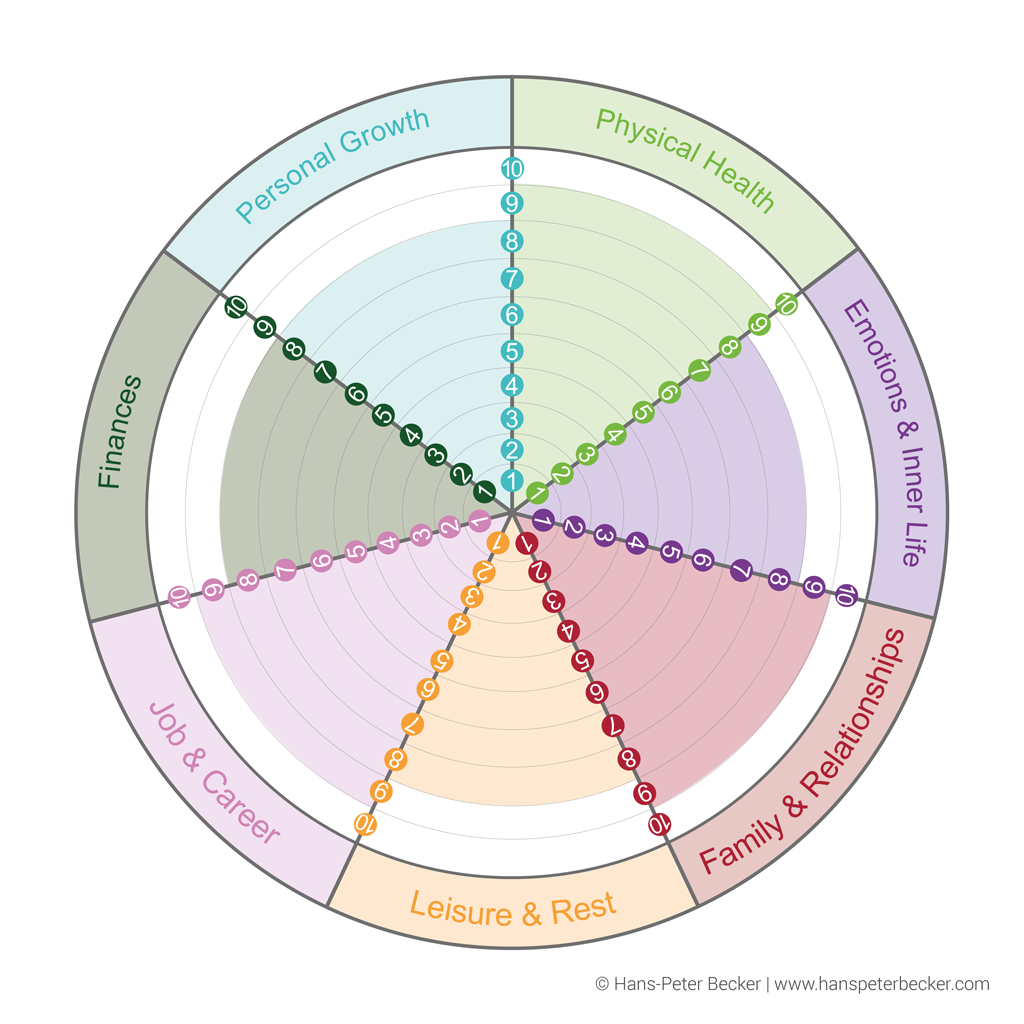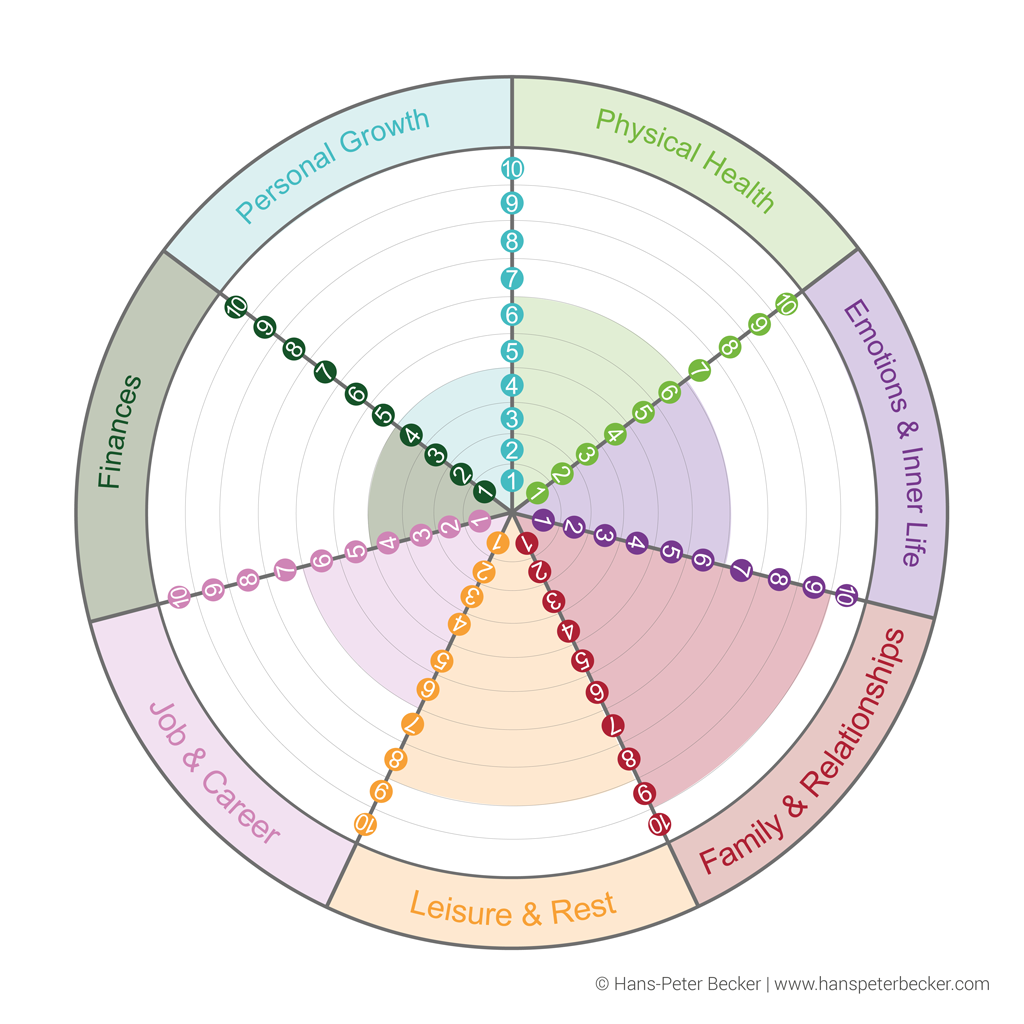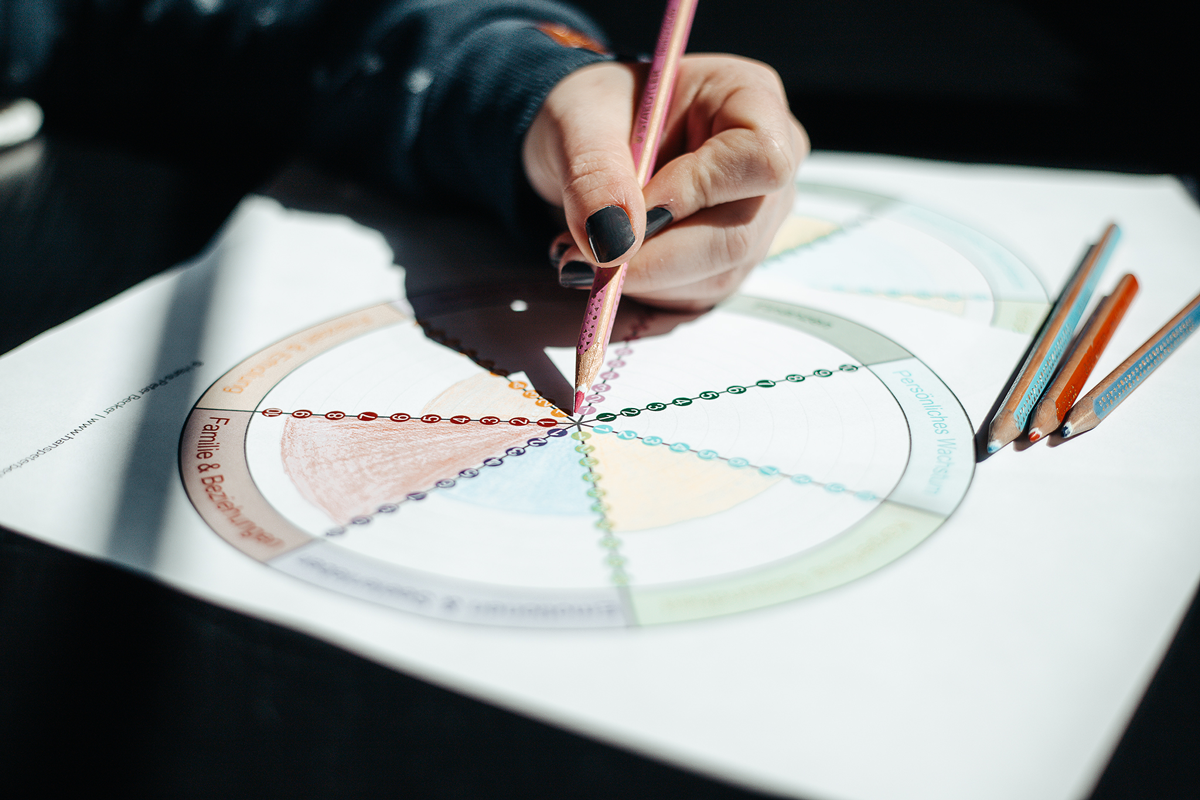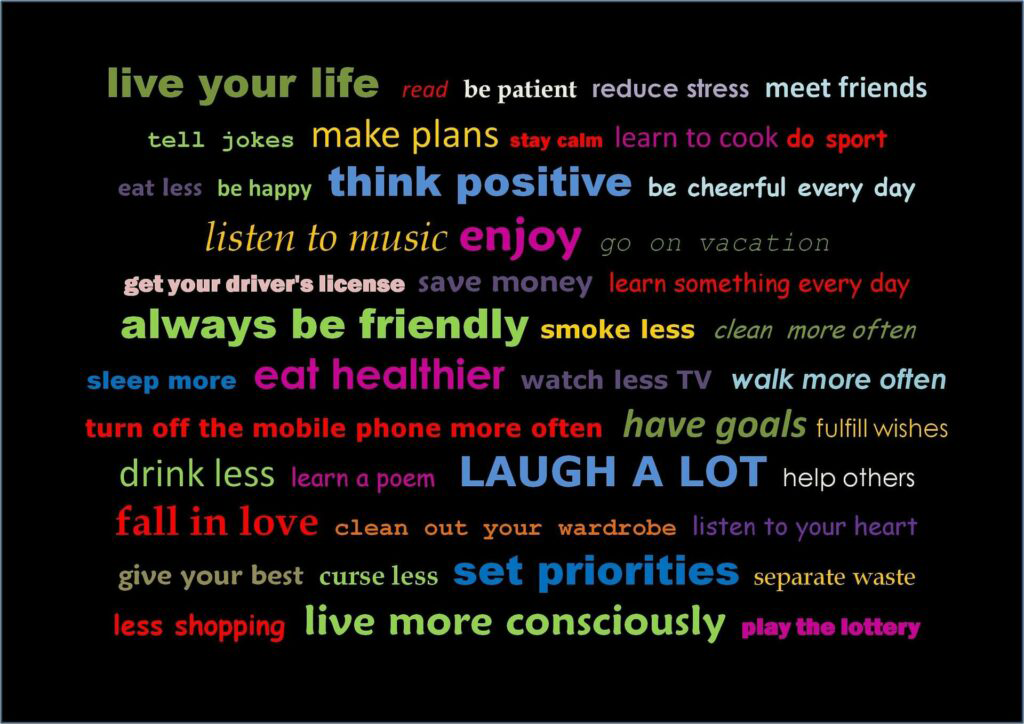Self-Management Part 1 – Recognizing goals with The Wheel Of Life
Latest Posts • February 25, 2020
Family, friends, sports, healthy food, music, travel, my business, further education and personal growth – these are integral parts of my life. I am often asked how I manage to do all these things and at the same time be fit, satisfied and balanced. In the upcoming blog posts, I will reveal the “secret”. Because in order to get to where I am today, I had to deal intensively with the topics of self-management and time management and I have found ways and means that have helped me to focus on what is important to me and to use my time efficiently.
The Wheel of Life
Happiness, balance, health, more time – especially more time for the things that really matter – who wouldn’t want that? But instead, many people rush through their lives and still feel as if they have not achieved anything at the end of the day, especially not the really important things. How to conquer this? First of all, I need to evaluate what these important things actually are, what really counts for us in life, what we want to achieve and where we stand in life. Before I can optimize my time management and self-management, I need to know WHY I want to optimize it. I have to know my priorities and my goals. The wheel of life is a descriptive tool which helps to figure out where exactly I am located on the most important points in my life. The first article on self-management is about the Wheel of Life.
Setting Priorities with the Wheel of Life
The Wheel of Life is often used in coaching sessions regarding the topic of self-optimization. With the help of this tool, you are also able to visualize your goals and priorities.

This Wheel of Life is divided into seven fields:
Physical Health
Emotions & Inner Life
Family & Relationships
Leisure & Rest
Job & Career
Finances
Personal Growth
The fields in the Wheel of Life represent areas in our lives that are important for our well-being and for a content life. The sections given here can also be individually complemented or exchanged with other fields, depending on where our priorities are. For example, it is conceivable to extend the wheel with a field for spirituality or to divide the field for family and relationships into three fields for family, friends and partnership.
Then we have to evaluate to what extent we give enough space to the important things in our lives and whether we are satisfied in the respective areas.
Finding Goals
Each field in the Wheel of Life covers a satisfaction scale from 0 to 10. The 0 is in the middle of the wheel, the 10 is in the outer area. Now it is important to evaluate the satisfaction with the respective segment on this scale. 10 corresponds to a 100 percent satisfaction. The area is then marked accordingly. If, for example, you are only 50 percent satisfied with your physical health, the area is marked in half. The shape that our Wheel of Life receives after having filled out the respective spots, reveals the point at which we have not reached our goals yet.
Asking the Right Questions
It is not always easy to assess the individual areas on the Wheel of Life honestly and accurately. The following questions, for example, have helped me:
Physical Health: How do I feel? Am I fit? Am I doing enough to maintain or improve my state of health? Do I pay attention to my diet and sleep? Do I work preventively on my health to protect myself from any illness?
Emotions & Inner Life: Do I feel balanced? Am I often irritated or overexcited? Are my actions goal-oriented? Which things in life do I find meaningful? And do I give these things enough space? Do I feel safe and respected? Do I believe in myself?
Family & Relationships: Do I surround myself with people who are important to me and who are good for me? What about the quality of my interpersonal relationships? Do I devote enough time to my daughter, my partner, my friends? And: Do I play the role I would like to play in the lives of my most important people?
Leisure & Rest: Do I feel like starting a new hobby? Am I able to unwind? Am I able to do nothing without having a guilty conscience?
Job & Career: Do I feel underwhelmed or overwhelmed? Do I receive the recognition I deserve? Do I enjoy going to work every morning? Do I feel well among my colleagues and employees? Is my job my passion? Is my income appropriate? Are they any professional goals that I want to achieve? And do I receive any support in achieving them?
Finances: What material possessions do I have? How important is this material possession to me? What does it enable me to do? What other financial goals do I want to be able to achieve (buying a house, travel…)? What about my retirement planning? Do I have financial knowledge? Do I save every month? Am I debt-free or am I in a debt trap? Could I live a year without having any income?
Personal Growth: What have I achieved until now? What are my goals and who or what is able to help me achieve these goals? What are my strengths? What are my weaknesses? Am I the person I want to be? Can I make better use of my potential? Do I engage in further education? Do I read books or attend seminars? Do I have role models in the areas that are important to me?

A balanced Wheel Of Life

An unbalanced Wheel Of Life
The Wheel of Life is also known as a balancing wheel. And the shape of our individual Wheel of Life is no coincidence. The wheel often does not run smoothly and we hardly find ourselves with a satisfactory score of eight to ten points in all areas. The goal is to achieve changes in the areas where the actual and the target state are furthest apart. The Wheel of Life shows which areas of life we should be concerned about and why. But what about the how?
It is ultimately necessary to ask the right questions in order to take the right steps. These questions will be the subject in one of the next blog posts. I will deal with RPM according to Tony Robbins. This method helps us focus and ask the right questions in order to achieve our life goals.




Leave A Comment